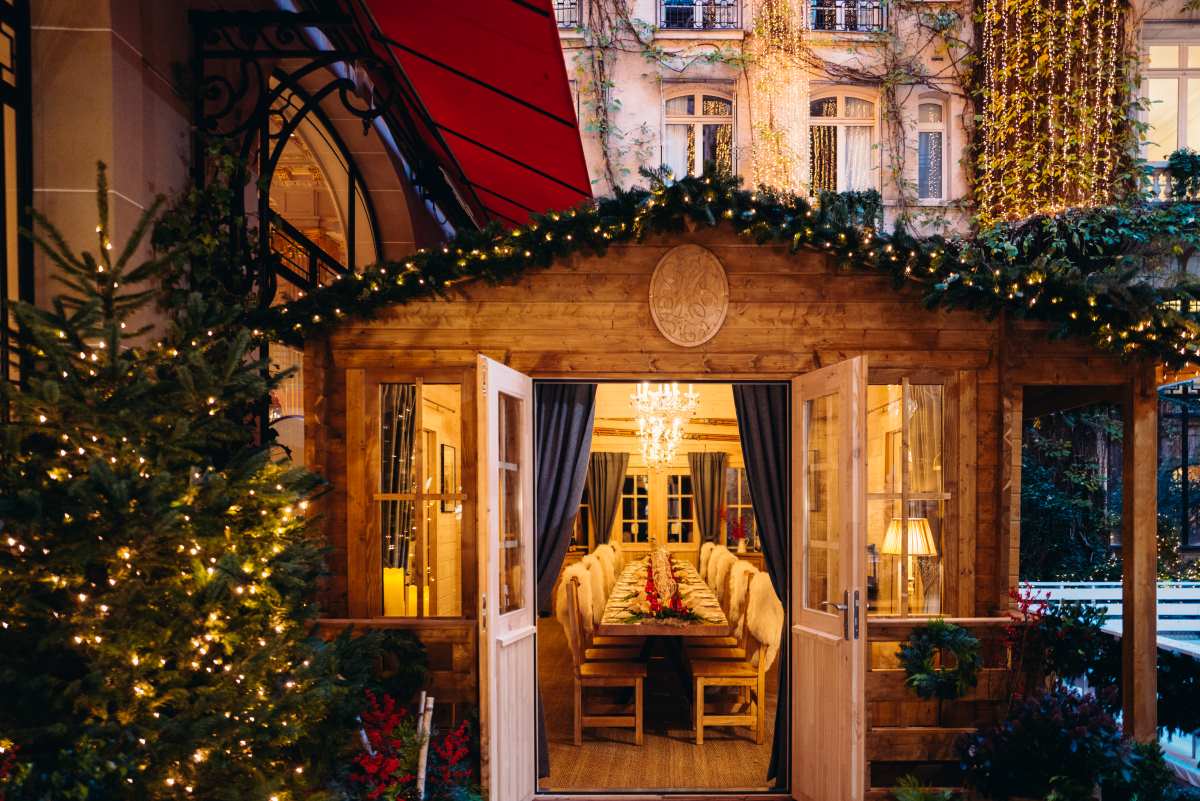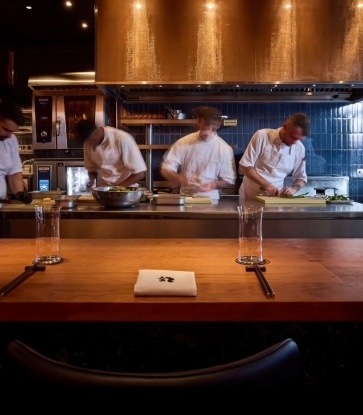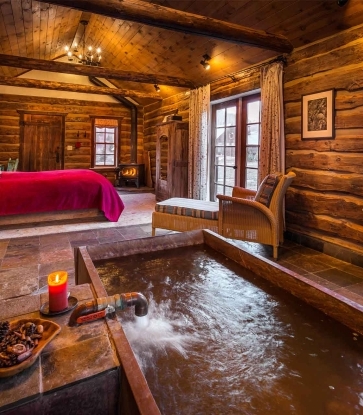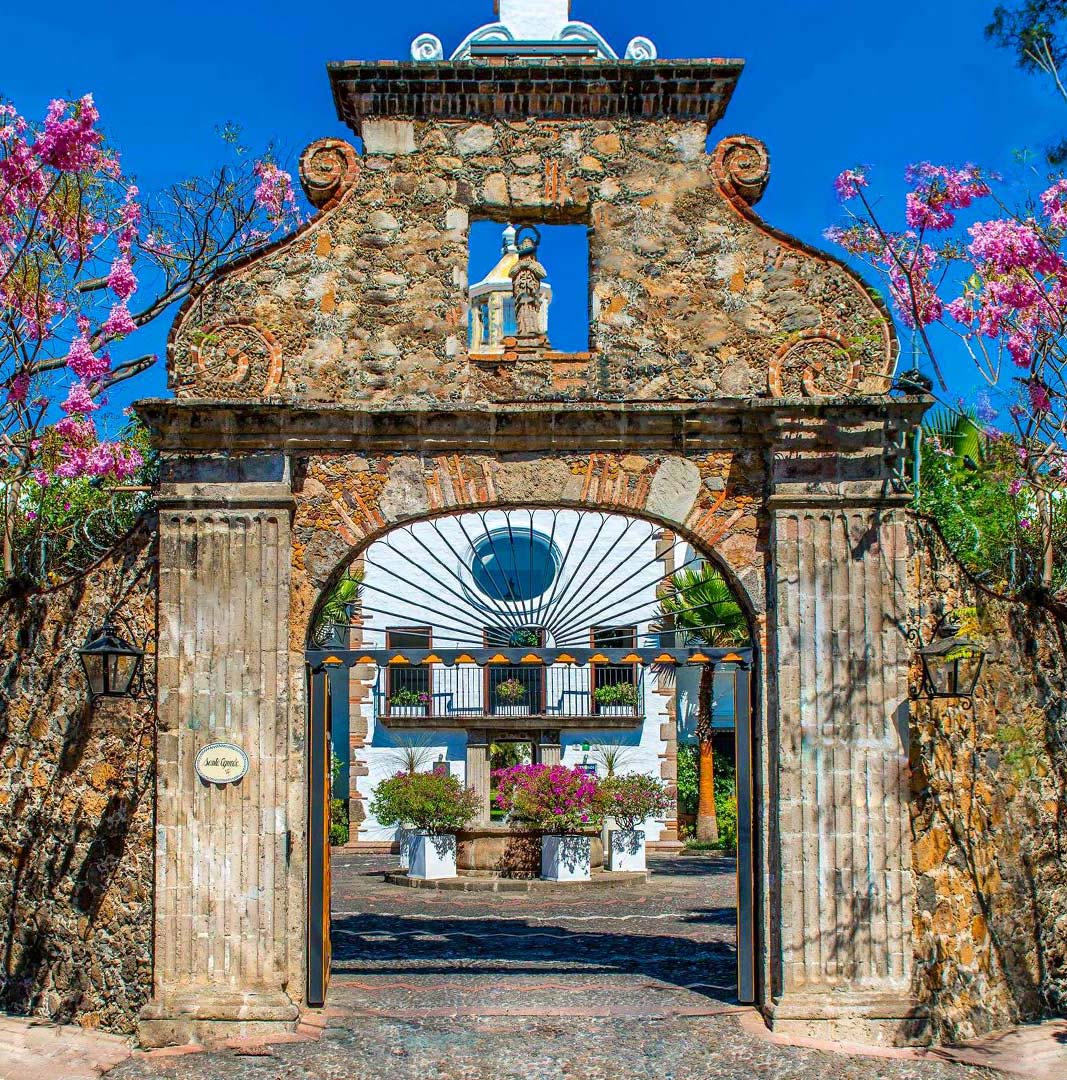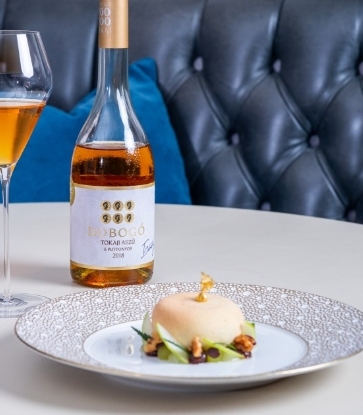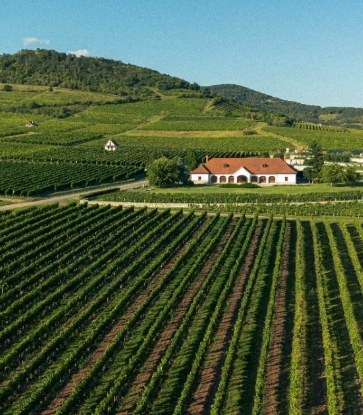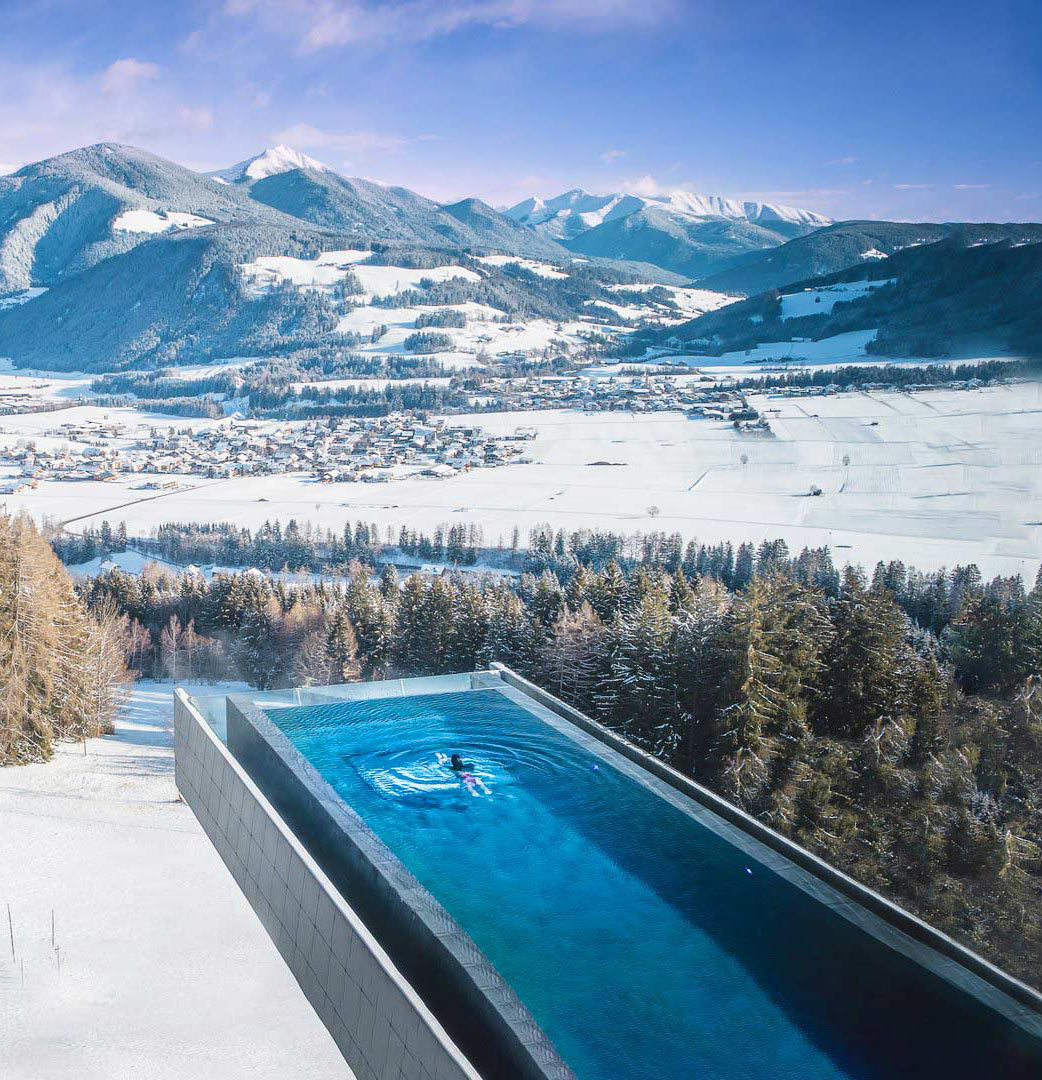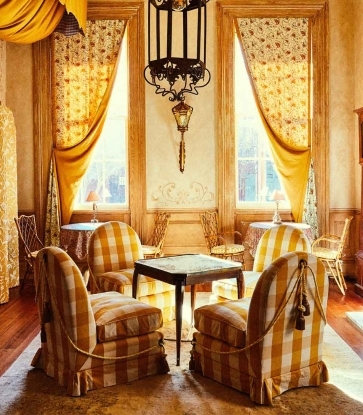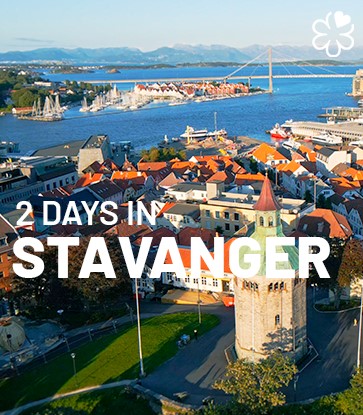On the way to the elevator that whisks guests up to the sixth-floor dining room at Tour d’Argent, a wall of fame pays tribute to some of the legendary diners who have passed through Paris’ oldest restaurant. Among the hand-scribbled notes are autographs from the A-list likes of Paul McCartney, a photo of Salvador Dalí feasting on a tower of langoustines with the lit-up Notre Dame Cathedral in the background, and a drawing by early 20th-century French poet and playwright Jean Cocteau depicting the restaurant’s famous pressed duck. It’s just a miniature glimpse of the throngs of illustrious visitors — many of them artists and writers, but also politicians and athletes — the MICHELIN-Starred establishment has welcomed over its five-century legacy.

The same could be said for the whole of the Latin Quarter, the history-steeped Left Bank neighborhood where Tour d’Argent resides. Home to the Sorbonne University since 1257 and with roots dating back to Roman times, it feels as though the brightest minds in history have all left their mark here at one point or another.
To get a sense of this intellectual heritage, you only need to look at the list of luminaries enshrined in the Panthéon — from writer and philosopher Voltaire to magistrate and politician Simone Veil — from which the area’s cobblestone streets spill out into the 5th arrondissement and the eastern edges of the 6th. But it’s also written into the many blue plaques that adorn the houses along the banks of the Seine and in the maze of medieval lanes tucked between the Jardin du Luxembourg and the Jardin des Plantes, commemorating former residents like novelists James Joyce and Ernest Hemingway, as well as the young Jean-Paul Sartre.

The area takes its name from the language once predominantly spoken by the Sorbonne’s scholars in the Middle Ages, and though you hear less Latin these days, it remains the heart of Paris’ academic and artistic life. Students mingle outside picture-perfect university buildings, jam-packed bookshops overflow onto the sidewalks with their wares, and at the many bistro terraces, dapper locals engage in the neighborhood’s unofficial pastime: reading.
It’s a living tableau of Paris past and present, where Old World institutions rub shoulders with arthouse cinemas, bohemian cafés and a new crop of restaurants serving inventive, globally inspired fare. Here are The MICHELIN Guide’s tips for getting your culinary — and cultural — fix in the ever-vibrant Latin Quarter.
Where to Eat in the Latin Quarter, Paris
You might think a restaurant that first opened in 1582 would remain steeped in nostalgia, but visit Tour d’Argent and you’ll realize it’s anything but. The grande dame of French haute cuisine has recently undergone an extensive renovation, led by interior designer Franklin Azzi. “Our aim was to bring La Tour d’Argent into the 21st century,” says third-generation owner André Terrail. “We want to draw on the richness of our history to make it a resolutely contemporary institution.” Since the arts have always been central to the establishment, the fully revamped dining room features artwork by Antoine Carbonne, Pauline Guerrier and other emerging talent, while Vincent Boudgourd’s illustrations adorn the numbered cards that accompany Chef Yannick Franques’ iconic pressed duck — a tradition the maison has upheld since 1890.

Restaurants across the Latin Quarter hum with creative energy. At the MICHELIN-Starred Ze Kitchen Galerie on the neighborhood’s western edge, it’s not just Chef William Ledeuil’s meticulously presented plates — marinated fish with seaweed dressing, peanut-topped lobster pasta in coral sauce — that brim with color and worldly eclecticism: The interiors, too, are decked out with bright paintings by Swiss jazz musician Daniel Humair to match.

But there’s more to the area’s dining scene than haute gastronomy — and we’re not talking about the ubiquitous student-friendly street fare. Instead, a wave of ambitious young restaurateurs has recently arrived, eager to bridge the gap between the high and low culinary offerings the Latin Quarter has long been known for.
“It was either too much or not enough,” says Stéphane Offner, co-founder of OTTO, a small-plates eatery with a 400-reference-strong wine list — the majority of them natural or biodynamic — on medieval Rue Mouffetard. The team, headed by Éric Trochon — whose other restaurant in the area, Solstice, has a MICHELIN Star — draw from the bustling street life just outside their door. Signature dishes such as a lamb kebab with gochujang harissa nod to the fast-food joints keeping the area’s late-night student crowd fed.

Far-flung flavors are also on the menu at Calice. At this neighborhood bistro just steps from the colorful Marché de Mouffetard, chef and co-owner Kazuma Chikuda serves up French classics with touches from his native Japan and beyond, translating to the likes of fried veal sweetbreads karaage and yakiniku-barbecued Black Angus steak. Dessert is an equally boundary-blurring affair, with pastry chef Kaori Akazawa incorporating typically Japanese ingredients — think matcha and sakura — into flans, profiteroles and other beloved pâtisseries.

Where to Stay in the Latin Quarter, Paris
It’s easy to see why, during a visit to the Latin Quarter, you would want to wake up to a view of the Panthéon, the monument that has shaped so much of the neighborhood's spirit. While that may sound like a dream, at Les Dames du Panthéon it’s a reality. The four-star hotel is the closest you’ll come to bedding down next to the great visionaries who rest across the road. Since nearly all of them — bar a handful — are men, the property’s owner, Corinne Moncelli, has dedicated each floor to a different influential Frenchwoman, from singer Édith Piaf to writer Marguerite Duras.

For a deep dive into the area’s millennia-long history, book a room at Hôtel Grand Coeur Latin. During a 2022 renovation, the team discovered an ancient Roman ruin, which informed the design of the hotel’s thermal-bath-like spa and 50-foot swimming pool, as well as the arch motif found throughout the 75-bedroom establishment.

What to Do in the Latin Quarter, Paris
With options ranging from the bouquinistes, secondhand and antiquarian book stalls lining the Seine, to the legendary Shakespeare and Company, you won’t struggle to find reading material in Paris’ historic university quarter.
Records, however, have become more of a rarity. Luckily there is still La Dame Blanche, a pint-sized disquaire (record store) specializing in classical music and jazz. “When I started in 1987, I thought it would be easier to make a living selling CDs and vinyl than books, since there were already so many librairies in the area,” says Régis Page, the shop’s 78-year-old owner. Ironically, in an age of streaming platforms, he’s now one of the few disquaires who have managed to survive, sustained by a dedicated community of collectors. Despite his age — and the challenges of the industry — he shows no signs of slowing down.

Cinephiles might recognize La Dame Blanche’s blue storefront on the slopes to the Panthéon from the 1974 film Les Gaspards. But it’s not just the Latin Quarter’s many picturesque corners that are film-worthy: The district has a rich cinematic heritage that lives on in its dozens of independent cinemas, such as Le Champo — cult Nouvelle Vague movie director François Truffaut’s one-time favorite — and the Cinéma du Panthéon.
Theater is another neighborhood mainstay. Besides Parisian institutions like the Théâtre de l’Odéon, it’s the smaller venues — the Romanian-French playwright Eugène Ionesco-focused La Huchette and the Théâtre de la Contrescarpe — that set the tone with their experimental productions. Part avant-garde, part rooted in centuries of intellectual tradition, it’s no surprise they feel right at home in Paris’ age-old cradle of creativity.

Hero Image: A food lover's guide to the Latin Quarter in Paris, featuring local cafés and some of the best MICHELIN-recommended spots. © Mary Quincy/MICHELIN Guide
Related Articles:




